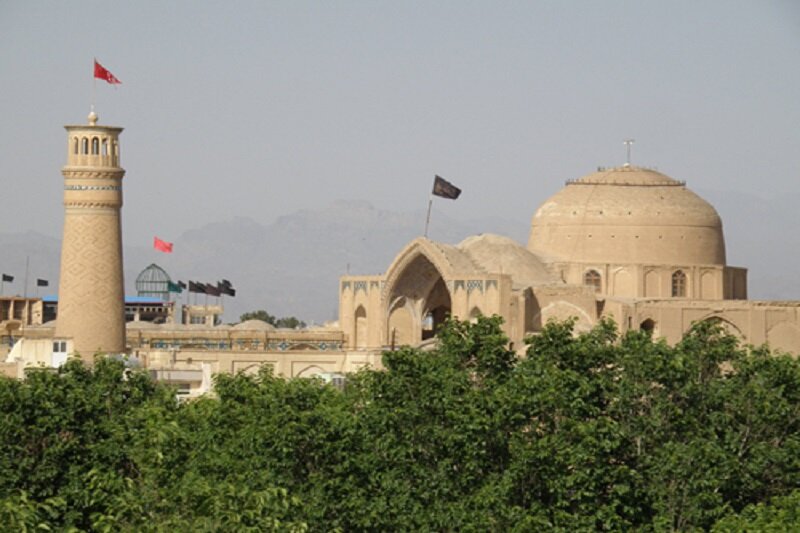Jameh Mosque of Kashan emerges resplendent after restoration

TEHRAN – Kashan’s tourism chief has revealed the successful completion of a restoration project on various sections of the ancient city’s Jameh Mosque.
Expressing the significance of this achievement for Kashan’s cultural heritage, Ahmad Danainia on Saturday said the Jameh Mosque, recognized as the third oldest minaret-adorned mosque in Iran, underwent a meticulous restoration, funded with a budget of 3.35 billion rials (some $67,000) from national resources.
The restoration work included external decoration using traditional materials, the careful replacement of worn-out adobe, the execution of adobe work on the southern exterior wall, and the installation of water channels on the roof. Additionally, window frames were adorned with metalwork, contributing to the preservation and enhancement of this architectural gem.
Elsewhere in his remarks, Danainia highlighted the significance of the recently discovered kilns within the mosque, unearthed during past excavations, as evidence of the enduring life on this historical site.
“Over the past decade, Jameh Mosque has undergone multiple restoration phases, including stabilization and reinforcement of collapsed sections, restoration of the dome’s chamber, courtyard, and the mosque’s Shabestan (underground area).”
Jameh Mosque of Kashan stands as one of the oldest religious structures in the Kashan region, tracing its roots back to the early years of Islam and during the Buyid era (934–1062). Throughout various historical periods, including the Seljuk, Ilkhanid, Zandiyeh, and Qajar eras, the mosque has undergone extensive reconstruction.
Many travelers opt to bypass Kashan on their journeys between Tehran, Isfahan, and Yazd, but this delightful oasis city on the edge of the Dasht-e Kavir is one of Iran’s most alluring destinations. The city not only boasts a cluster of architectural wonders and a UNESCO-recognized garden, but it also offers some of central Iran’s best traditional hotels.
During the Seljuk period (1051–1220) Kashan became famous for its textiles, pottery, and tiles, reaching high levels of accomplishment in each of these cottage industries. Today, it is more widely known as a major center for the production of rose water, which is sold at outlets around the main tourist attractions and dedicated stores in the bazaar.
AFM
Leave a Comment